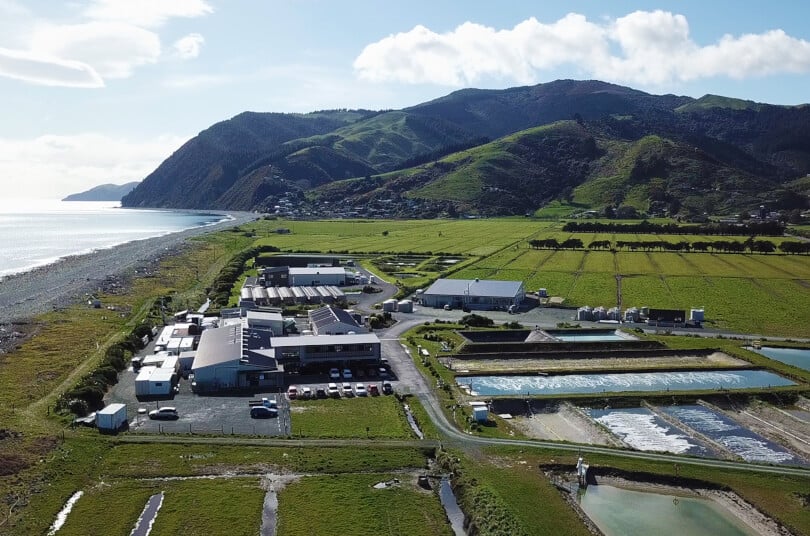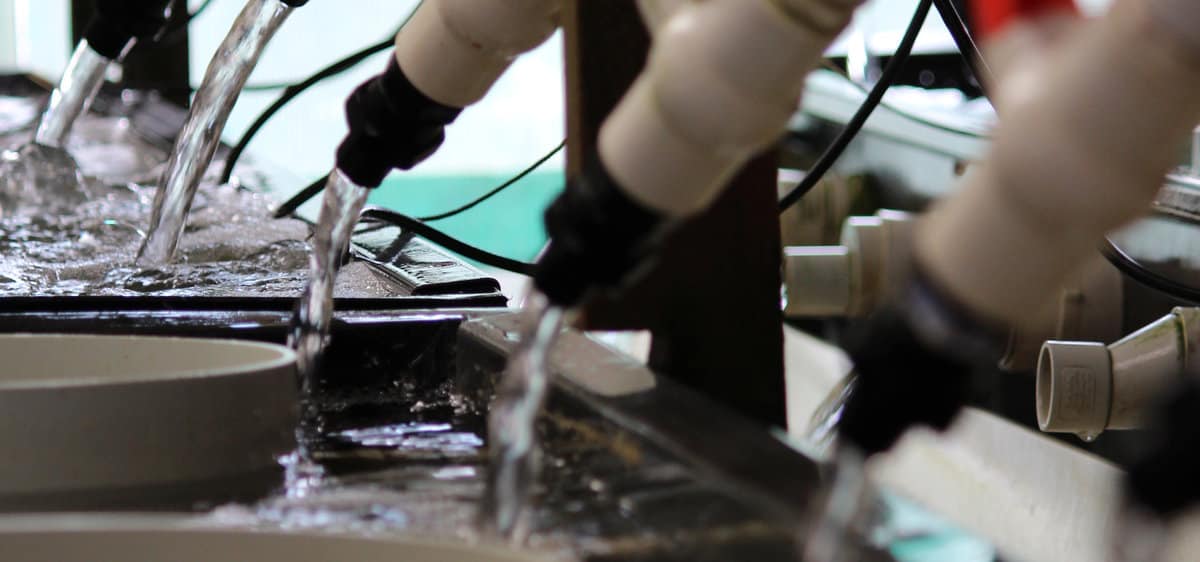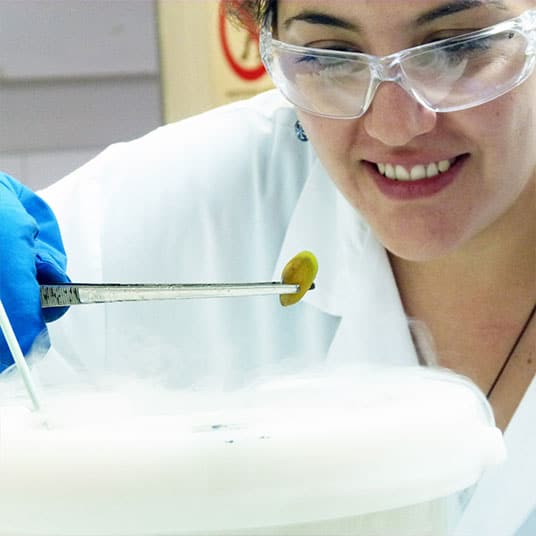Case Study: The science of shellfish aquaculture
How Cawthron Institute is developing technology and farming practices that optimise shellfish aquaculture operations.
September 2021
Introduction
Cawthron Institute’s Aquaculture Group prioritises research and development that supports the growth of New Zealand’s aquaculture industry. Cawthron Aquaculture Park is a world-class research and technology centre for the New Zealand aquaculture sector and its stakeholders. It’s a shared facility, purpose-built for aquaculture research, education and commercial development and hosts companies including SPATnz and Moana Ltd as well as teaching laboratories run by the Nelson Marlborough Institute of Technology.
Much of the research conducted at Cawthron Aquaculture Park aims to develop technology and practices that will optimise shellfish farming operations. We work alongside our industry stakeholders when developing research objectives, like understanding and addressing the causes of major inefficiencies or vulnerabilities, like summer mortality syndromes that cause massive stock losses or spat transport stress.
Below we’ll summarise some of the recent Cawthron research projects that aim to develop technologies and practices that optimise shellfish aquaculture operations in New Zealand.

Image: Cawthron Aquaculture Park, Nelson.

Image: Cawthron Aquaculture Park, Nelson.
1. Research aims to link the physiology and behaviour of juvenile, green-lipped mussels during the aquaculture seeding process to enhance productivity
Although a common practice that the mussel industry depends upon, seeding mussels into marine farms is a highly inefficient process, with most mussels being lost in the early stages of the production cycle. The seeding process involves removing juvenile mussels from the water for extended periods of time to transfer them great distances from their site of capture or culture, before seeding them back into the sea onto a coastal nursery farm.
Seeding is a critical event for the success of mussel aquaculture, not only must the mussels survive, but they must also remain attached to, or at least reattach to the grow-out structures on the nursery farm. Yet, seeding is a highly stressful process for the young mussels, especially given that they can experience enormous variations in stressors such as time in the air and low humidity as they are transferred to a nursery farm, and oxidative stress when they resume aerobic activity upon immersion in the sea.
Cawthron’s Dr Paul South and colleagues recently published a study finding that the size of the mussel was a significant factor in detachment losses during seed deployment. The primary implication of this finding is that new nursery techniques are required to grow small juvenile mussels to a size beyond which their detachment and byssal drifting behaviour is reduced, so that they are less likely to detach upon or soon after immersion while seeding out to farm sites.
Read more about this study that explores the relationship between immersion and detachment of juvenile green-lipped mussels >
Definition: Relative humidity – Relative humidity tells us how much water vapor is in the air, compared to how much it could hold at that temperature. It is shown as a percent. For example, a relative humidity of 50 percent means the air is holding one half of the water vapor it can hold.
In a recent study led by Dr Paul South, Cawthron scientists explored the effect of emersion time and relative humidity during air exposure on the stress response and recovery of juvenile green-lipped mussels.
In their early juvenile life-stages, stressors may directly influence the physiological status of mussels. Stress can promote migration via byssal drifting, and in a farming context this is problematic, because juvenile mussels can abandon the ropes to which they were attached and move somewhere else – a loss for the farmer and a risk for this mussel which is now more vulnerable to predators. A detailed understanding of the nature of stress experienced is critical to inform conservation and aquaculture efforts.
Cawthron’s Dr Natalí Delorme was a co-author of this study. Natalí is an expert in understanding the impact of stress, health and nutrition on different shellfish species through the development methods for testing and measuring oxidative damage and examining antioxidant biomarkers.
Natalí also led another study where the team examined oxidative stress dynamics in the juvenile green-lipped mussel, Perna canaliculus, in relation to emersion duration (1-20h) and relative humidity (RH, 29-98%) by quantifying oxidative damage and antioxidant markers.
“To understand the impact of stress, or really any health problem in an animal, you need to define what healthy looks like, and then understand exactly what physical reaction the problem causes in the animal so you can measure it.”
In this case working with mussels, we saw that if we measured damage to proteins, fats and DNA, as well as enzymatic antioxidants, we could see a difference in these from before and after the mussels were subjected to the stress (e.g., air exposure), meaning they’re good ‘biomarkers’ and we can use them to measure oxidative stress.”
The results of this study showed that juvenile mussels held in low relative humidity during emersion experienced severe water loss (>70%), high apparent mortality (>80%) and increased oxidative damage (35-45%) increase compared to control conditions), while mussels held at high relative humidity were not impacted, even after 20h air exposure.
Following re-immersion in seawater, reoxygenation stress resulted in further increases in damage markers in mussels that had experienced dryer air conditions. Clearly, conditions during air exposure, as well as duration, substantially influence physiological performance and recovery of juvenile mussels and this has significant implications for mussel farmers. If they can mitigate oxidative stress caused to mussels during transport to marine farms, they can increase spat retention and improve productivity.
Read more about this study that explores the relationship between emersion and relative humidity >

Image: Cawthron Institute researcher Dr Natali Delorme examining juvenile mussels in Cawthron Aquaculture Park’s laboratories.
3. Reducing transport stress for shellfish
A key role of Cawthron’s Shellfish Aquaculture Research Platform is to explore ways to add value to NZ’s current aquaculture production. One exciting possibility for green-lipped mussels is to tap into high value live export markets. This is challenging, as the major markets in Asia and North America require mussels to be transported out of water for many days.
Cawthron scientist Dr Leonardo Zamora leads research aiming to understand and mitigate the stress associated with handling practices prior, during and after transport of live shellfish, ultimately extending shelf-life, quality and market value. In a recent project, Leo and his team examined the potential benefits of two traditional techniques used in shellfisheries overseas: forced closure of the shells during transport and the use of ‘re-swimming’ recovery tanks at point of sale.
By comparing the on-set of oxidative damage and mussel’s ability to mobilise anti-oxidant defences, the team were able to monitor short-term physiological stress, as well as longer-term survival. Restricting the mussels’ natural tendency to open their shells in air proved beneficial, reducing stress over short transport periods, but these benefits diminished as the transport period extended. Ironically, the apparently beneficial act of returning mussels to water was found to induce significant oxidative stress that could subsequently cause death. The research highlights the importance of developing a detailed understanding of physiological responses to inform supply chain strategies and suggests there is significant scope to optimise the live market access of green-lipped mussels.
Although the research indicates that oxidative stress is obviously not good for the health of juvenile mussels, and is best avoided, Cawthron researchers are also eager to understand other ways to mitigate the effects of this stress.
Dr Paul South was part of a recent study which aimed to investigate the relationship between transfer and seeding-associated stressors and the physiological and behavioural responses of juvenile, green-lipped mussels. Paul said the key questions his aims to answer is whether mussels can be conditioned to respond to transport stress by exposure to stressors in early life stages.
“We looked at cellular damage from stressors and tried to match it to behaviour and viability.”
The results were complex, and Paul said they are not yet able to marry cell damage to the behaviours, however they intend to continue this research as it shows good potential.
“Obviously if we were able to condition to mussels to be more resilient to transport stress this would be a big win for industry so we’re still scoping further research in this area.”
Conclusion
The combined findings of these studies demonstrate the exciting progress being made by Cawthron’s shellfish aquaculture researchers into the development of technologies and practices that will support the resilience and growth of New Zealand’s shellfish aquaculture industry.
Cawthron’s Aquaculture Group Manager Dr Serean Adams said most of these findings can result in immediate real-world impact because of Cawthron’s close partnership with industry.
“We are very committed to sharing our work with industry – after we publish research, sometimes mussel and oyster farmers will trial different practices based on our results, or we might offer a new kind of testing service for a health problem, or work with a company to adapt their breeding programme…
“That is really one of the major motivators for me – I love seeing our research applied by industry and delivering results because it keeps us so focused on impact.
“I really believe that our science is a huge enabler of shellfish aquaculture success in New Zealand and that makes me proud.”